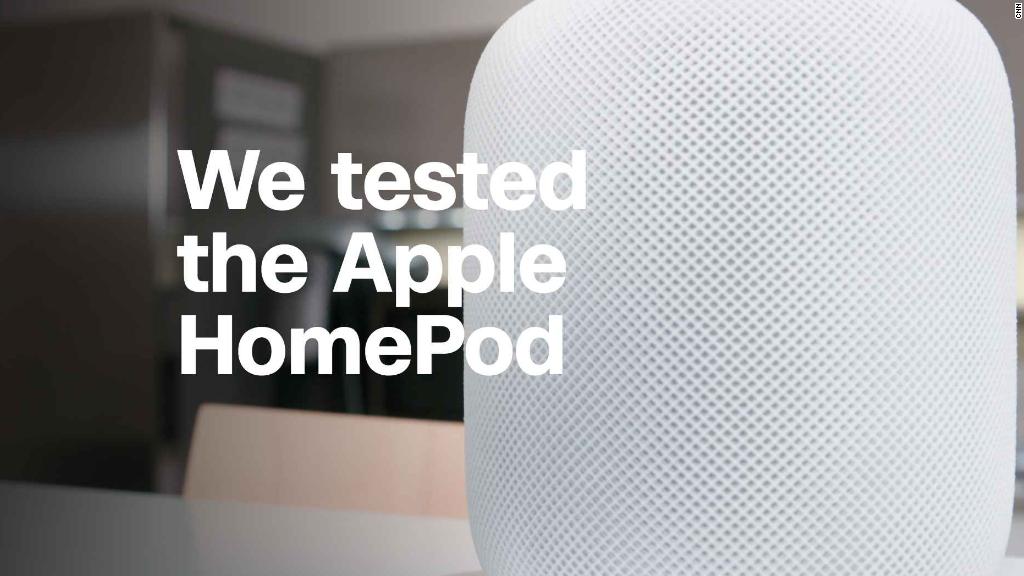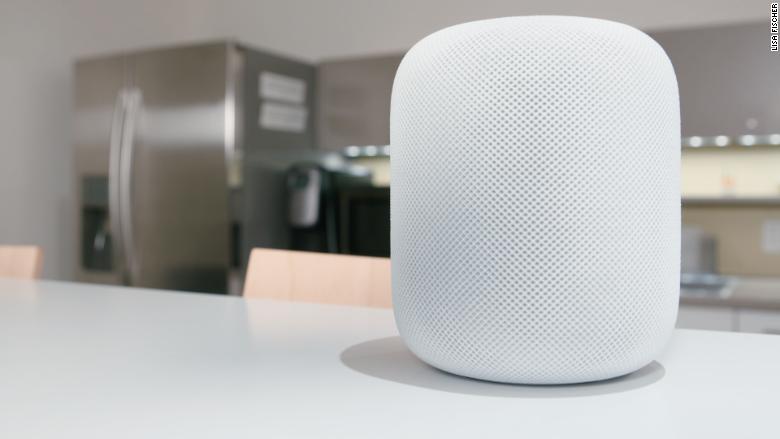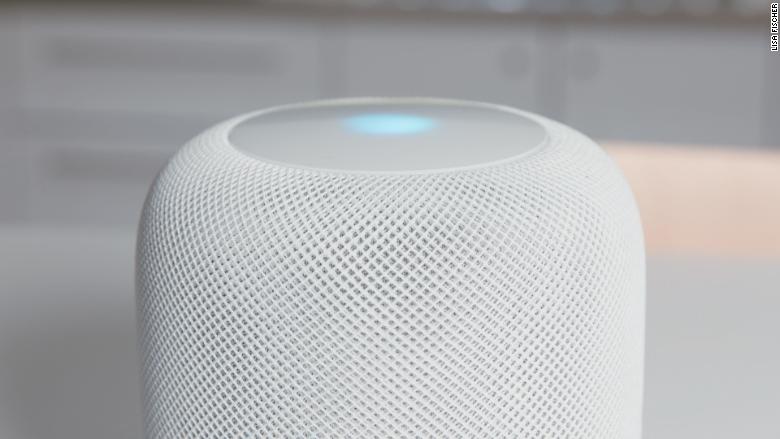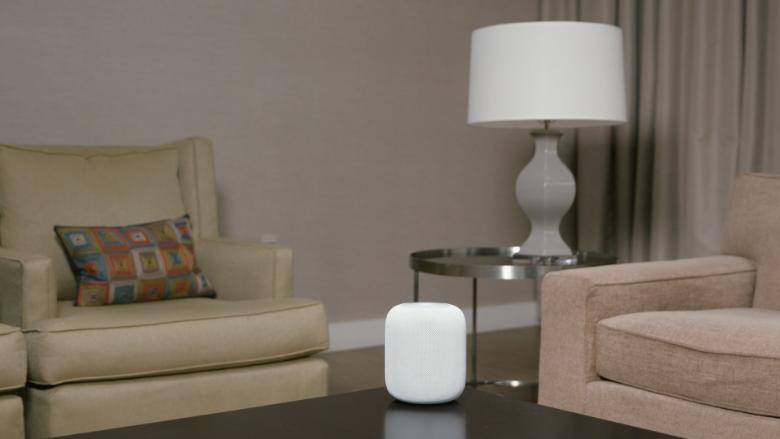
Two weeks ago, I was invited to a "listening party" for Apple's HomePod speaker in downtown Manhattan.
At the company's spacious loft, in rooms both big and small, the HomePod's sound quality was rich and resonant, allowing for a fine details like guitar strumming, background percussion and vocals to come through crisp and clear.
After a sound-off against competitors Amazon Alexa 2, Sonos One and Google Home Max, it was clear Apple had developed the best sounding smart speaker yet.
But earlier this week, my optimism subsided after spending a bit more time with the HomePod. Away from Apple's demo space, it sounded just as good as I'd remembered. But its limitations -- mostly Siri -- overshadowed the experience. The HomePod's Siri makes the iPhone's Siri look like a genius.

You need to have an iOS device to use it, and you must subscribe to Apple Music to access songs.
At $349, Apple HomePod, which hit stores on Friday, is the second priciest smart home speaker option behind the Google Home Max ($399). It's more than triple the price of the popular Amazon Echo ($99). You can also get two Sonos One speakers with built-in Alexa voice control for what the cost of one HomePod.
Design and sound
The compact HomePod comes in two colors: white and space gray. I opted for white. At 7 inches tall and less than 6 inches wide, the HomePod is both bigger and heavier (5 pounds) than you'd expect.
In certain lighting, the shadows of the white model's sponge-like mesh netting appear somewhat worn. The overall aesthetic is what my co-worker referred to as cat scratching post chic. But chic it is -- it's a sharp-looking piece of technology that'll look good on counters and shelves in the home.
Set up is easy: Similar to using Apple AirPods, your iOS device detects when the HomePod is plugged in and walks you through set up. Your iPhone or iPad will need to be connected to Wi-Fi and have Bluetooth enabled.
The top of the HomePod features a touchscreen. You can tap and hold a virtual volume buttons, and do the same to pause or skip tracks. It's also possible to call on Siri by holding down the middle section of the touchscreen.

Inside, eight speakers are controlled by a powerful processor. Seven microphones -- six for Siri and one for automatic bass correction -- detect the surrounding walls and space, ensuring sound quality is solid regardless of where you are in a room. A woofer with a custom amplifier sits near the top.
I've said this already, but I'll say it again: the HomePod sounds good. Because it analyzes surrounding acoustics and makes adjustments based on location, you'll be hard pressed to find a spot in a room, even one that's pretty open, where solid quality is lacking.
Even with the volume up high, Siri will hear your voice over the music. You can also sync up two for even richer surround sound.
Siri
It's evident Apple picked music as its focus over Siri. The company has made improvements to its voice assistant on iOS over the years, so it's possible future HomePod software will make the voice assistant much smarter.
Like with Alexa or Google Assistant on competing devices, you can ask Siri to play music and podcasts, read you the news and control other connected devices in the home.
Commands such as "Hey Siri, what's the weather like in New York City?" and "Hey Siri, play Kanye West" work without a hitch. But Siri sometimes stumbled around current events or trivia questions, stating, "Sorry, I can't search the web here."
Siri gets its information from sources such as Yahoo Finance, ESPN, Weather.com and Wikipedia.

When you're ready to play music, Siri plays DJ and pulls from Apple Music to serve up songs and playlists. Considering Spotify has 70 million subscribers, compared to Apple Music's 36 million users, the company is alienating a good portion of potential customers.
Both Amazon Echo and Google Home allow you to set Spotify or Pandora as their default music streaming service. If you want to do the same on the HomePod, you'll need to use the AirPlay feature streamed from another Apple device. Siri can't help you with that.
Siri's limitations continue: It can't make calls, tell you what's on your calendar for the day, set more than one timer at once or order an Uber (or Domino's Pizza) like you can on competing smart speakers.
You can, however, control smart lights, blinds and other appliances with Siri if they're compatible with Apple's smart home platform, HomeKit.
Perhaps the biggest issue stems from Siri's inability to recognize your voice apart from others. Siri has no problem with that on the iPhone and the iPad.
"Hey Siri, read my last text message" sounds like a helpful ask, but considering a roommate, kid or someone else in your house could ask for such information too, it raises privacy concerns.
HomePod will read text messages by default. That can be turned off in settings.
Should you buy it?
Apple's decision to restrict HomePod customers to iOS and Apple Music is a strategic effort to keep people embedded in its ecosystem. But it could hinder adoption out of the gate.
However, if you're an Apple Music subscriber or rely heavily on your iTunes music library, this is the only smart speaker that's an option for you right now if you want to control it with your voice.
For people who don't subscribe to Apple Music, the company isn't giving casually interested users a good enough reason to choose the HomePod over other smart speakers. The sound quality is tops and design is beautiful, but with a heftier price tag, lack of partnerships with companies like Spotify and Uber, and Siri's inability to be truly useful right now, it's more of an Apple aspiration than a product ready for the prime time.

